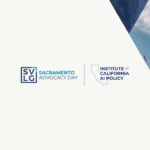Following the murder of George Floyd in May 2020, colleagues from the Stanford Business School’s Class of 1994 decided to take collective action to address systemic racism in the United States.
When some of the classmates came together in a working group on organizational practice and accountability, many working as general managers said they felt they could be doing more on diversity, equity, and inclusion. They knew resources were out there, but they didn’t know where to start. After speaking with leaders who had made progress on DE&I, DE&I consultants, and academics, the group put together a framework and specific recommendations for change. The Racial Equity Playbook, a tool designed to help corporations make meaningful changes to drive diversity, equity, and inclusion, came out of this collaboration.
On Thursday, January 13, SVLG’s Racial Justice and Equity Team hosted a peer-to-peer conversation about corporate diversity with the Racial Equity Playbook’s co-founder, Jennifer Silva, Dr. Thane Kreiner, Co-Founder of the Black Corporate Board Readiness Program and Ken McDonald, General Manager at Togetherwork. The team discussed their experiences implementing the playbook at their own companies and working with corporations and other entities who have adopted their recommended practices.
***
The Great Resignation has spotlighted what makes some workplaces great and where others fall short. According to a recent analysis in MIT Sloane Management Review, failure to promote diversity, equity, and inclusion (DE&I) are one of the primary reasons workers jump ship. DE&I is emerging at the forefront of a much-needed shift in employer hiring and retention practices. This involves questioning and moving past traditional hiring practices, which are often tied to the networks of existing employees and executives.
As General Manager of TogetherWork, a fast-growing SaaS and payments company, McDonald applies this mindset as he seeks accountability from hiring managers around hiring with diversity in mind.
“It’s not rocket science—we are just putting the KPI’s out there and asking, what are you going to do? How are you going to execute this?” he said.
While TogetherWork relied largely on referrals for new hires in the past, they realized that their customer base could be a great source of potential employees. They now post in social media forums and places that customers hang out, and it’s getting results.
“We have seen over and over again that referrals don’t make it to the second or third round against people from the customer base, and customer-based recruiting results in more diverse recruiting and stronger candidates overall,” McDonald said.
In addition to posting on a broader range of forums, job descriptions also need to be more inclusive, Kreiner noted. For example, employers should consider whether a four-year degree is really necessary to succeed in a position or if other qualities are more important.
“Some of the frameworks and qualifications that we have used to qualify people may not be relevant today, so be really mindful of the language that you use,” Kreiner said.
***
It’s common to hit resistance in the push for racial equity, Silva said. Some may ask whether there is a need for the program at all, and others may embrace it but worry that too much change will hurt the company.
In one example, an employer recruited exclusively from a set of 12 schools that they believed produced graduates in line with the organization’s needs. Leadership believed that their narrow recruitment was hindering their efforts to diversify and that things needed to change from the top down. They resolved to widen the field to 900 schools, leading to a more diverse talent pool. While many in the organization questioned whether people outside of their tight network of 12 schools would be the right fit, they later saw the benefits of a diverse workforce and found the change to be worth the effort.
“It can add some time, and that’s why the commitment is so important,” Silva said.
***
While TogetherWork was previously focused almost exclusively on sales, the company received feedback from some communities that the company didn’t understand their needs, indicating that greater attention to DE&I could help them meet their sales goals. This realization helps both to motivate the company’s DE&I program and to address the resistance that Silva described.
TogetherWork implemented DE&I objectives in the last year and has already seen notable results.
While employee census numbers were not tracked in the past, the organization now shares this data with all employees.
“We’ve been really transparent about where the numbers are going and where we’ve got progress that we’ve got to make,” he said.
Employees have generally had a positive response, often saying that it’s different from other places they’ve worked. And after using the playbooks for about a year, McDonald has seen a clear change in core KPI’s, too.
“That’s really demonstrated to us that you can make progress in a pretty quick fashion if you take the right actions,” he said.



